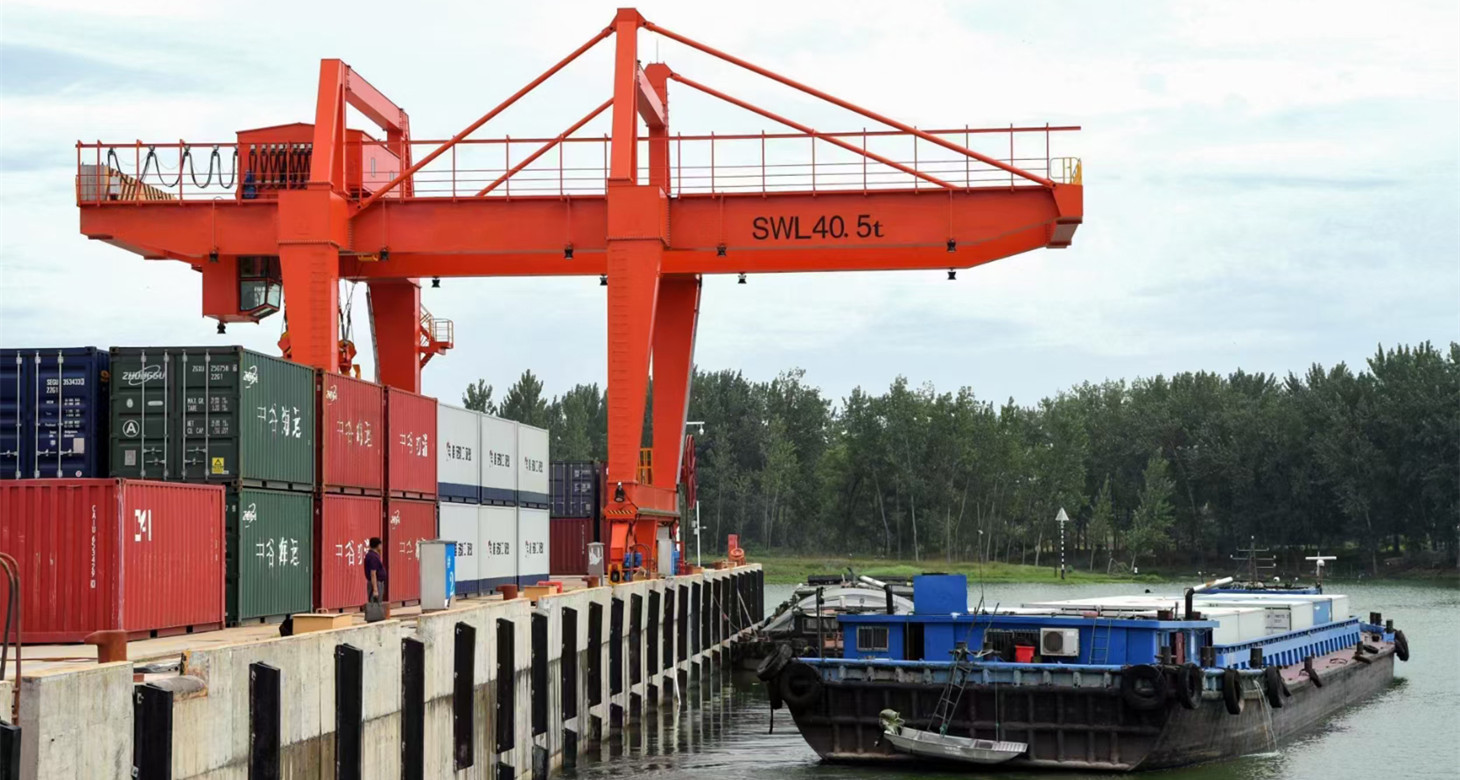Using a cantilever type double girder gantry crane in a railway station involves a series of meticulously planned steps to ensure the safe and efficient handling of heavy loads. This type of crane is essential in railway stations for tasks such as loading and unloading cargo, lifting heavy machinery, and even assisting in the maintenance of railway cars. The cantilever type double girder gantry crane is renowned for its robust structure, superior load capacity, and versatility, making it a valuable asset in the railway industry. Here is an in-depth guide on how to effectively operate this crane in a railway station environment.

Understanding the Structure and Function
A cantilever type double girder gantry crane consists of two parallel girders supported by legs that run on rails. The cantilever design allows for an extended workspace beyond the crane’s legs, providing additional reach and flexibility. This is particularly useful in railway stations where space constraints and the need to span multiple tracks are common. The crane is equipped with a hoist mechanism that moves along the girders, allowing it to lift and transport heavy loads with precision.
Safety Precautions and Preparations
Before operating the cantilever type double girder gantry crane, it is imperative to conduct a thorough safety assessment. This includes inspecting the crane for any signs of wear or damage, ensuring that all safety devices are functional, and verifying that the rails on which the crane operates are clear of obstructions. Personnel involved in the operation should wear appropriate personal protective equipment (PPE) such as hard hats, safety gloves, high-visibility vests, and steel-toed boots.
Operational Training and Certification
Operating a cantilever type double girder gantry crane requires specialized training and certification. Some manufacturers provide this kind of service like Aicrane. Operators must be familiar with the crane’s controls, load capacity, safety features, and emergency procedures. Regular training sessions and refresher courses are essential to keep operators updated on best practices and safety protocols.
Step-by-Step Operation
Step 1: Pre-Operation Checks
Before starting the crane, perform a series of pre-operation checks. Ensure that the power supply is stable and that all control panels are functioning correctly. Check the condition of the hoist, ropes, and hooks, and lubricate moving parts as necessary. Verify that the load-lifting mechanisms are in good working order and that the crane’s limit switches are set correctly to prevent over-travel.
Step 2: Planning the Lift
Proper planning is crucial for a successful lift. Assess the weight and dimensions of the load to ensure it does not exceed the crane’s capacity. Identify the lifting points on the load and determine the best attachment method using slings, chains, or other rigging equipment. Plan the route the crane will take to move the load, considering any obstacles or potential hazards.
Step 3: Rigging the Load
Attach the rigging equipment to the load, ensuring that it is securely fastened and balanced. Use tag lines to control the load during lifting and prevent it from swinging. Communicate clearly with the rigging team to coordinate the lift and ensure everyone is aware of their roles and responsibilities.

Step 4: Lifting the Load
With the load rigged and the area cleared of non-essential personnel, begin lifting the load slowly and steadily. Use the crane’s controls to raise the load to the desired height, ensuring that it remains stable and balanced. Monitor the load for any signs of shifting or instability and be prepared to lower it immediately if any issues arise.
Step 5: Transporting the Load
Once the load is lifted, use the crane’s trolley and bridge controls to transport it along the girders to the desired location. Move the load slowly and avoid sudden starts or stops to prevent it from swinging. Use the cantilever feature to extend the crane’s reach if needed, allowing for precise placement of the load even in tight spaces.
Step 6: Lowering the Load
When the load reaches its destination, slowly lower it into place. Use the tag lines to guide the load and ensure it is placed accurately and safely. Once the load is in position, detach the rigging equipment and perform a final check to ensure it is secure.
Post-Operation Procedures
After completing the lift, perform a series of post-operation procedures. Inspect the crane and rigging equipment for any signs of wear or damage that may have occurred during the lift operation of gantry crane. Record the operation in the crane’s logbook, noting any issues or maintenance needs. Secure the crane in its designated parking position and ensure it is powered down safely.
Maintenance and Regular Inspections
Regular maintenance and inspections are essential to keep the cantilever type double girder gantry crane in optimal condition. Schedule routine inspections to check for wear and tear, lubricate moving parts, and replace any damaged components. Adhering to a strict maintenance schedule helps prevent unexpected breakdowns and extends the crane’s lifespan.
Operating a cantilever type double girder gantry crane in a railway station requires a combination of technical expertise, meticulous planning, and strict adherence to safety protocols. By following the outlined steps and prioritizing regular maintenance, you can ensure the safe and efficient use of this powerful equipment. The cantilever type double girder gantry crane is an invaluable tool in the railway industry, providing the strength and flexibility needed to handle heavy loads and keep operations running smoothly.